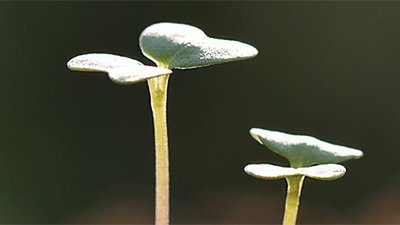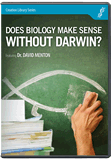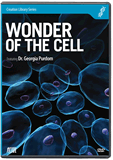Orchid Beauty
Orchid beauty—“an unplanned marvel of evolution”
News Source
- National Geographic: “Deceptive Beauties—The World of Wild Orchids”
A National Geographic book review of Deceptive Beauties—The World of Wild Orchids describes the beauty of orchids as “an unplanned marvel of evolution.” Darwin, the review says, considered orchid shapes, colors, and scents to be “‘beautiful contrivances’ meant to dupe pollinating male insects in the strangest ways,” even imitating pheromones and the appearance of female bees. The book excerpt says, “An orchid enthusiast himself, Darwin gathered wild orchids near his home in Kent and propagated them. In fact, orchids inspired some of his most critical thinking on natural selection. In his book The Various Contrivances by Which Orchids Are Fertilised by Insects, he explains the co-evolution of insects and orchids and calls them ‘amongst the most singular and most modified forms in the vegetable kingdom.’”
Deceptive Beauties—The World of Wild Orchids celebrates the diversity and beauty of orchids, and judging from the slide show of photos accompanying the review, it must contain rich photographic testimony. The authors emphasize the global distribution and diversity of orchid species. Orchids are found in the Alps, the tropics, and countless habitats in between. Some of the most interesting varieties are those that imitate insects. Darwin’s 1862 book about orchids mentioned above explained orchid variation mediated through natural selection but used the diversity in orchids to support his notion that new kinds of organisms evolve all the time. However, scientific observation has not shown one kind of organism evolving into another. Orchids, diverse as they are, demonstrate the adaptability and variability God designed into the orchid kind.
Neither Darwin nor modern evolutionists have been able to provide an evolutionary explanation for the supposed co-evolution of orchids and their bees.
Darwin described orchid adaptations and partnerships with pollinators as “the sum of many inherited changes,” but failed to offer a mechanism by which flowers perfectly mimicking female insects could develop when no selective advantage existed for the many component parts. Neither Darwin nor modern evolutionists have been able to provide an evolutionary explanation for the supposed co-evolution of orchids and their bees.
The complex pollinating machinery of orchids, designed as it is typically to require and facilitate a once-and-for-all pollination scheme, is a fine example of irreducible complexity. Many species of orchids, for instance, depend on specific species of male bees for pollination, and the corresponding bees likewise depend on those orchids for fragrances that facilitate their mating success. The orchid attracts the bee and attaches a mass of sticky pollen to it. The blob of pollen is later scraped off in an orchid of the same type. Evolutionists have assumed these organisms co-evolved by the back-and-forth stepwise manifestation of new traits. However, the selective advantage of pollination half-measures would be nonexistent, so “the evolutionary processes that [presumably] gave rise to these associations remain poorly understood.”1
Biblically, we know that God made all kinds of plants on the third day of Creation week and flying insects on the fifth day. God created plants and animals to reproduce successfully, so we can conclude that He created some organisms capable of forming productive partnerships. The genetic capacity to vary would enable some organisms to establish new mutualistic partnerships as conditions change. And whenever a species-specific mutualistic relationship develops, reproductive isolation of the orchid species would soon develop. (Recent research has shown the orchid bees to be less choosey than previously thought; the mutualism seems somewhat one-sided.) Orchid diversity is a product of the interaction and interdependence of variations within created kinds. Biblical principles explain orchid diversity and their mutualistic relationships with bees.
Further Reading
- Orchids—A Bouquet of Adaptations
- Orchids ... A Witness to the Creator
- Bees and Orchids: Which is “Evolving” Faster?
For More Information: Get Answers
Remember, if you see a news story that might merit some attention, let us know about it! (Note: if the story originates from the Associated Press, FOX News, MSNBC, the New York Times, or another major national media outlet, we will most likely have already heard about it.) And thanks to all of our readers who have submitted great news tips to us. If you didn’t catch all the latest News to Know, why not take a look to see what you’ve missed?
(Please note that links will take you directly to the source. Answers in Genesis is not responsible for content on the websites to which we refer. For more information, please see our Privacy Policy.)
Footnotes
- Santiago R. Ramirez et al., “Asynchronous Diversification in a Specialized Plant-pollinator Mutualism,” Science 333, no. 6050 (September 23, 2011): 1742–1746, doi: 10.1126/science.1209175.
Recommended Resources

Answers in Genesis is an apologetics ministry, dedicated to helping Christians defend their faith and proclaim the good news of Jesus Christ.
- Customer Service 800.778.3390
- © 2024 Answers in Genesis







